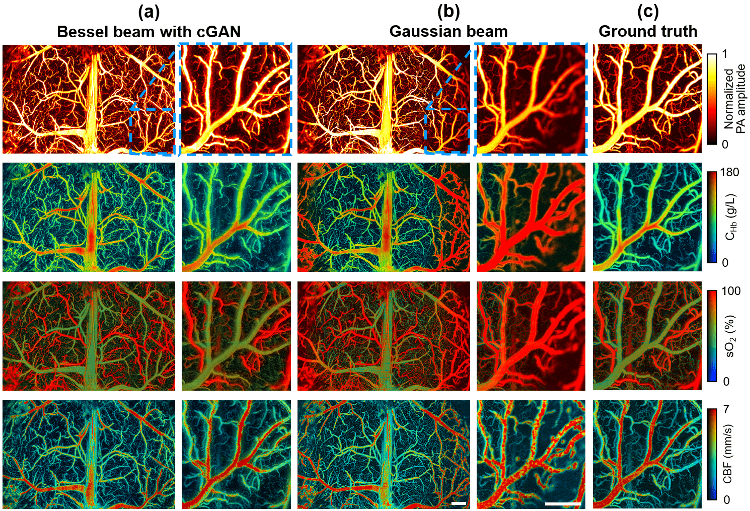Scientists use photoacoustic microscopy to measure various biomarkers in the body, but some of these measurements can be inaccurate due to limitations of the light-focusing beam that produces out-of-focus images. Engineers in the McKelvey School of Engineering at Washington University in St. Louis have designed a new technique that combines hardware and software innovations as a one-two punch that overcomes this obstacle with excellent accuracy.
Song Hu, PhD, associate professor of biomedical engineering, along with Yifeng Zhou and Naidi Sun, members of his lab, combined a Bessel beam that propagates in the tissue in a diffraction-free manner with a conditional generative adversarial network-based deep learning model to obtain high-resolution photoacoustic images of hemoglobin concentration, blood oxygenation, and blood flow in the mouse brain with an extended depth of focus of about 600 microns. Compared with the conventional Gaussian-beam excitation based photoacoustic microscopy system, the combined method showed significantly higher quantitative accuracy.
Results of the research are published in IEEE Transactions on Medical Imaging, published online ahead of print July 5.
Hu and the team had several obstacles to overcome to reach their successful outcome, he said.
“The Bessel beam is able to focus into a nice spot over a much-extended depth range, but it has rings around it that compromise the image quality,” Hu said. “That’s where the machine learning approach comes in. We developed a machine learning algorithm to learn the difference between the Bessel beam-generated image and the image acquired in the focal plane of the Gaussian beam.”
